Our Verdict
Things we liked It’s a Fitbit, so that means smart activity tracking, excellent sleep tracking and great use of the data from the heart rate monitor, to name but a few benefits of going with this brand. Battery life that’s among the best in class among smartwatches around the £200 mark. The Deezer app is slick and makes it easy to load up tracks to listen to on the Versa. Android users can now set up quick replies to texts and messages from services like Facebook Messenger and WhatsApp. It looks great and there are plenty of extra premium bands available to gussy it up even more. Fitbit’s swim tracking’s been dramatically improved with the addition of length counting and stroke recognition. Integration of the Fitbit Coach workout app is well done and can guide you through plenty of sessions. Things we didn’t like I found using the assisted GPS a faff. It’s best to sync the Versa with the app when trying to get a GPS signal but even then you can be waiting a while. The mechanism for changing the strap is fiddly. As with the Ionic (Fitbit’s top-end smartwatch), streaming music from the Versa to Bluetooth headphones can be a touch choppy on occasion. The app offering still doesn’t come close to the likes of Apple iOS or Android Wear OS.
You can trust Coach

Fitbit Versa
Credits: Photograph: Monique Woo
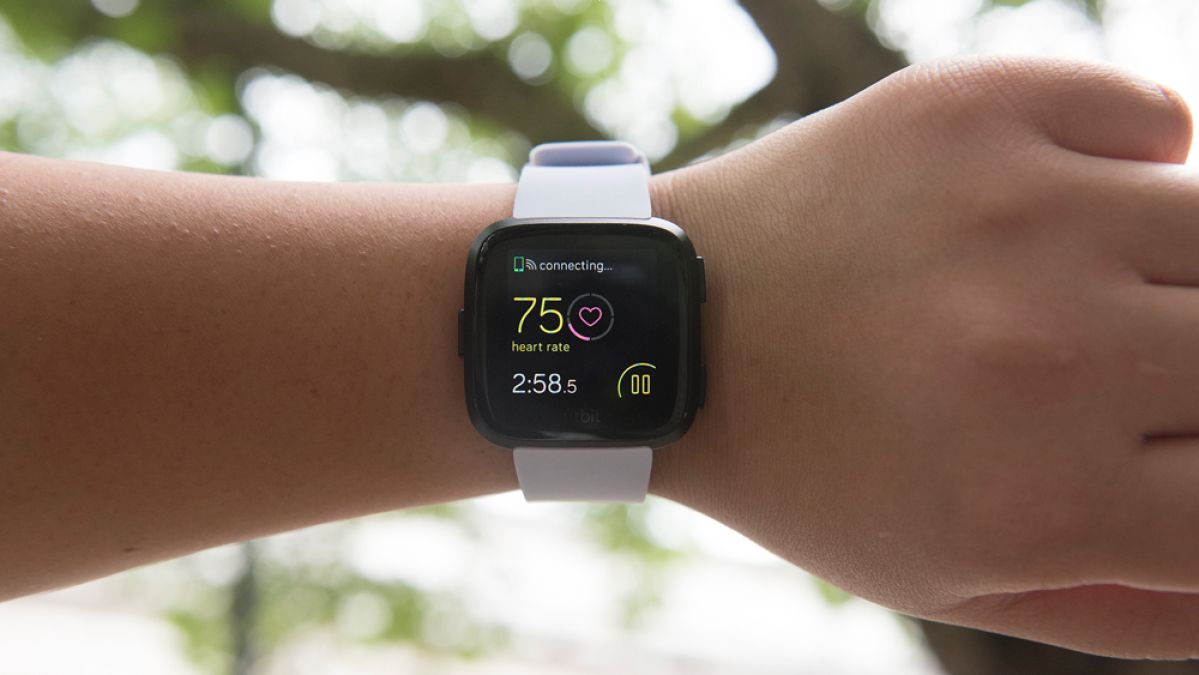
Fitbit Versa
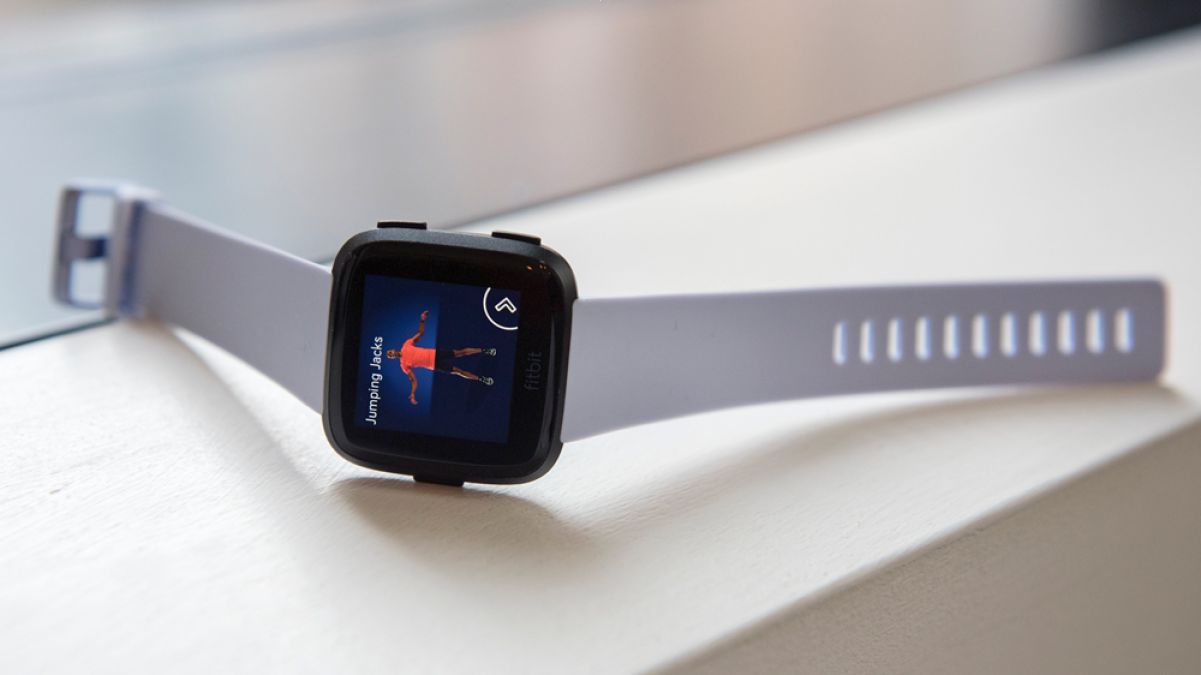
Fitbit Versa
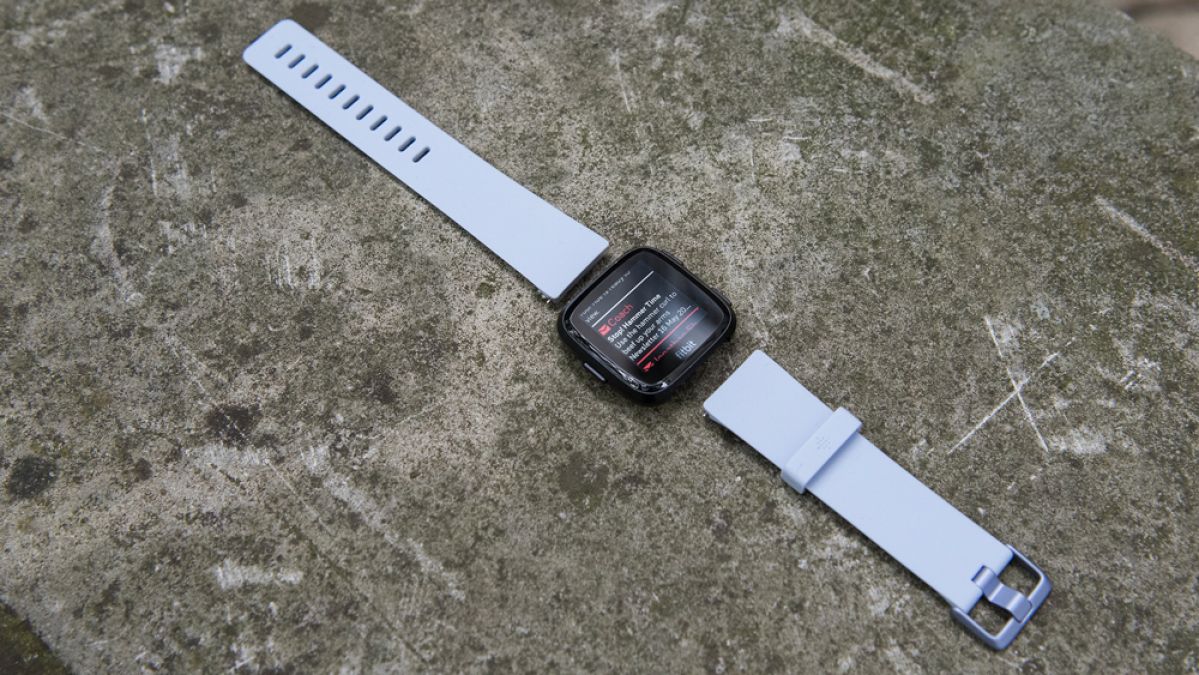
Fitbit Versa
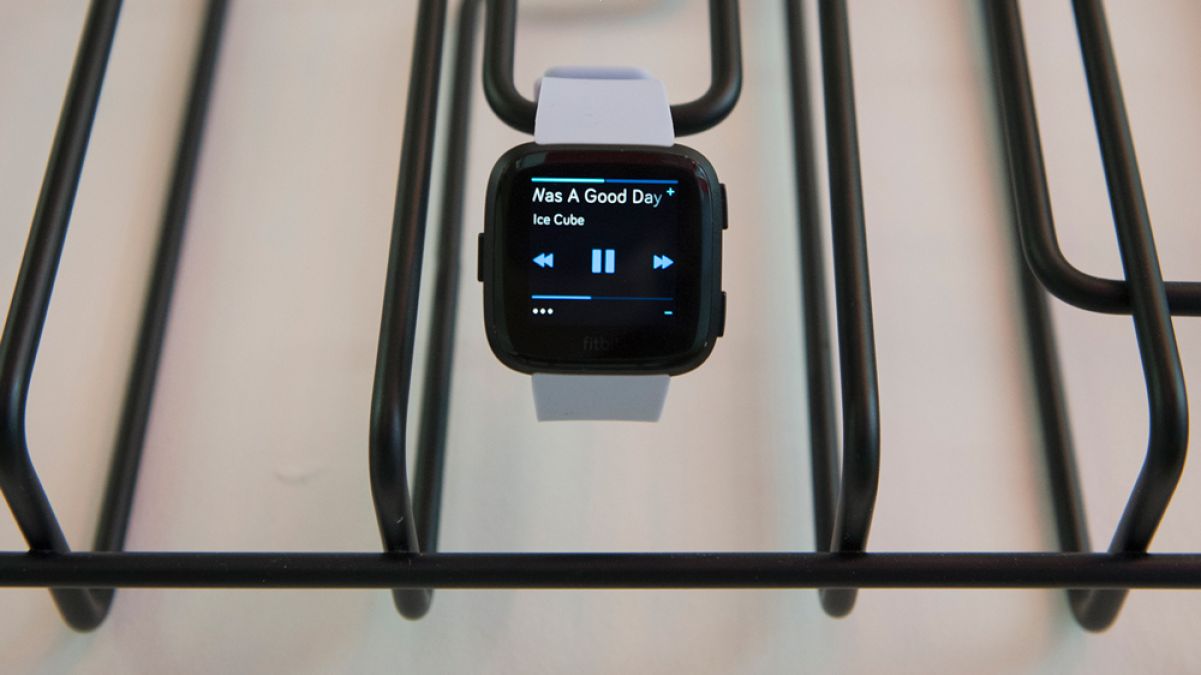
Fitbit Versa
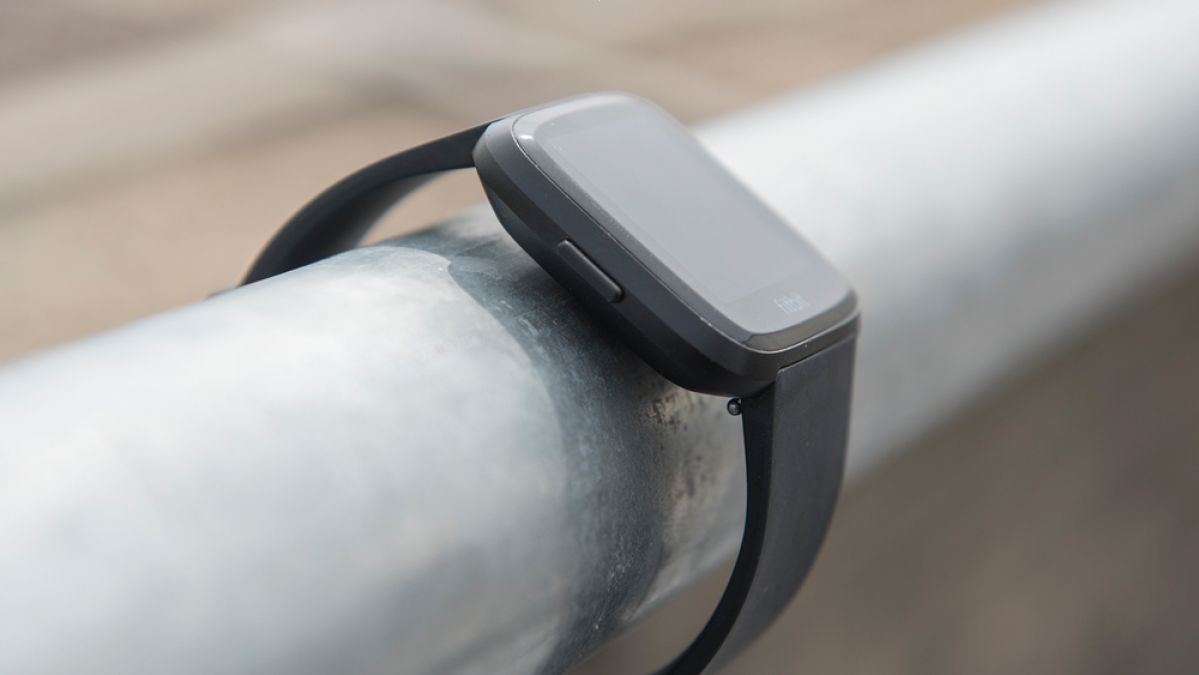
Fitbit Versa
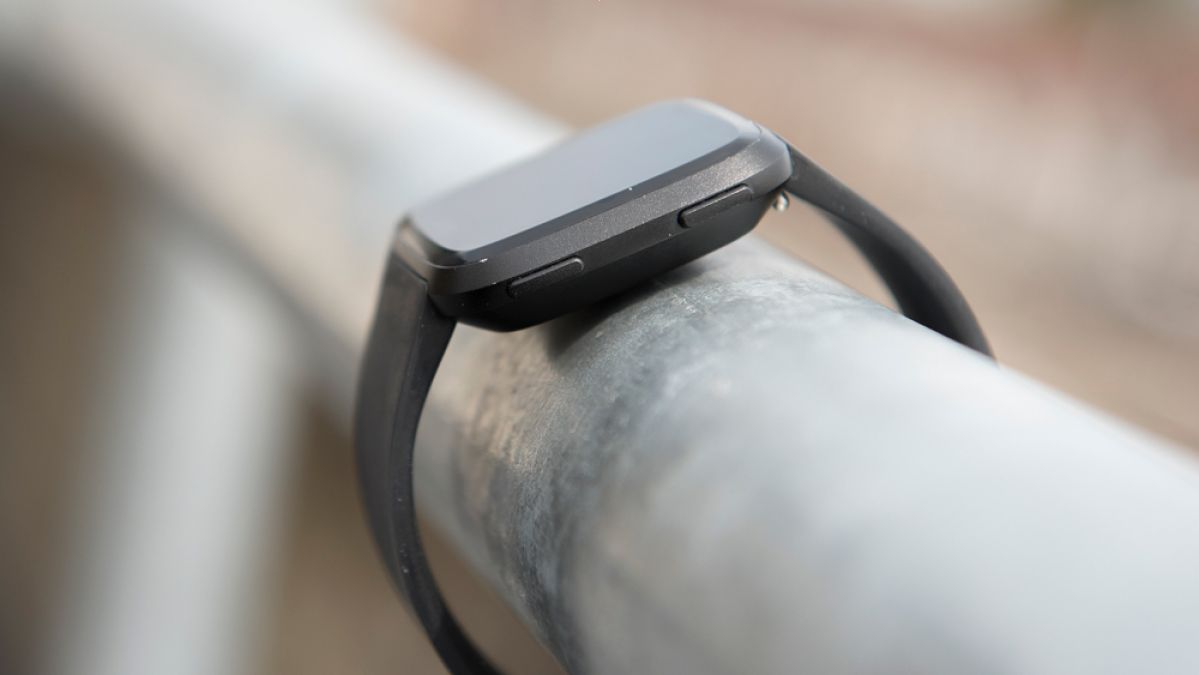
Fitbit Versa
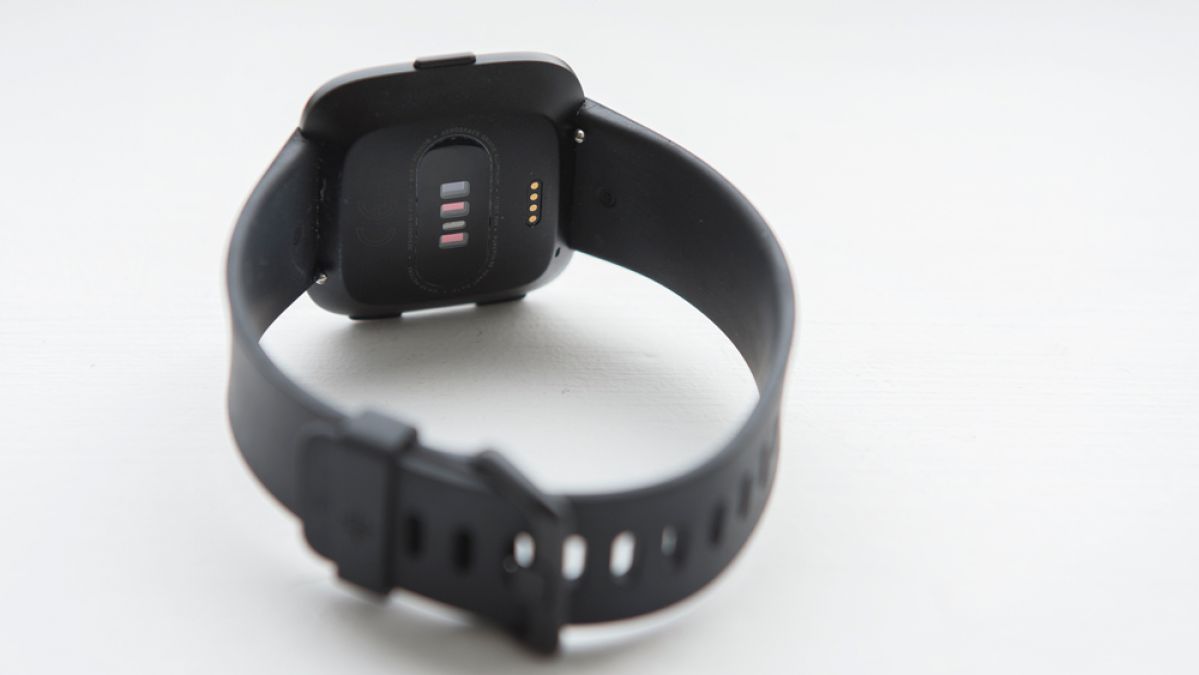
Fitbit Versa
Fitbit Versa In Brief
For anyone who’s not taking their fitness really seriously (like, triathlete serious), I think Fitbits are the best choice for activity tracking as well as recording runs and time spent in the gym. And Fitbit’s second stab at a touchscreen smartwatch has taken a big step forward in what else it offers. There’s slick offline integration with music streaming service Deezer and the first high street bank coming onto Fitbit Pay. I’d wager that the Versa will be as popular as Fitbit’s biggest smash, the Charge 2.
Buy from Fitbit | £200
See related
- How To Pick The Best Fitbit For You
- The Best Fitness Trackers
- Fitbit Ionic Fitness Tracker Hands-On Review
- Fitbit Charge 3 Review
Fitbit Versa In Depth
Using The Fitbit Versa To Track Activity
Fitbit has nailed tracking your daily activity and the Versa performs in the same way as the Ionic and Charge 2 by tracking steps with an accelerometer and floors climbed with an altimeter. Each metric has daily targets, and badges available for all-time highs over 24 hours and cumulatively over your lifetime. There is also an hourly step target of 250 to hit to ensure you’re staying mobile throughout the day.
There are also challenges leaderboards, solo adventures where your steps take you own famous routes (like the NYC marathon) and unlock vistas, or adventure races where you virtually race a friend around a famous route with your steps.
The Versa also keeps track of your active minutes, adding up any exercise you record and logging any period of moderate activity, like walking, automatically.
It’s a compelling mix of tracking and motivational features. If you’re really only after something to see how generally active you are you won’t be disappointed (although if that’s only what you’re after, the Fitbit Charge 2 will do all that for a considerably lower cost).
Using The Fitbit Versa For Working Out
There are a number of workout options to select on the Versa, 19 in total, seven of which can be loaded onto the Versa. The gym-based ones include weights workout, workout and circuit, but they’re different in name only. They will all track duration and heart rate, using the latter to estimate your calorie burn. The live tracking screen shows three metrics at once: two smaller numbers on the top and bottom which are static (although you can change them in the settings on the watch easily before you start) and a larger middle metric that’s an editable list you can scroll through by swiping or using the Versa’s left-hand button. Thank goodness Fitbit included the latter. Anyone who’s tried to control a touchscreen when they’re a sweaty mess gasping for air will know having a big fat button to press is a blessed relief.
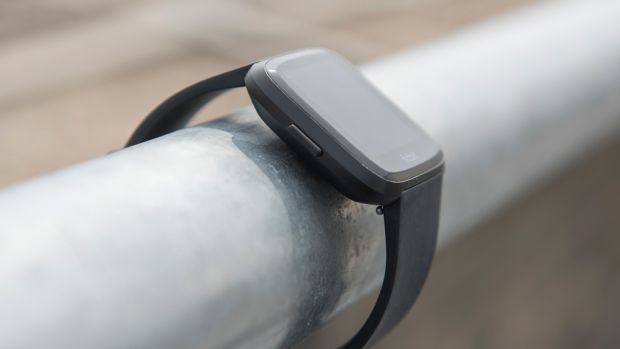
There are also options for cardio machines like the treadmill, elliptical, stair climber and exercise bike (called spinning in the app), but these also just track duration, heart rate, calories burned and, where appropriate, steps and therefore distance. Conspicuous by its absence is a mode for rowing machines but as far as I can see there’s no reason not to just use the general workout tracking mode.
The Versa does have an intervals mode, which many competitors don’t include. It’s bonkers not to have it frankly – it’s one of the features I use the most. The Versa’s version is well done, although you have to set the duration of work and rest periods, and repetitions in the app then sync it over. This is quick and easy to do, but it would be quicker and easier if it could be done on the device itself. I also recommend turning the device’s vibration level to strong in settings, because there’s nothing worse than working into a rest period.
The Versa also comes preloaded with Fitbit Coach, a subscription app (an extra £30 a year) that may well be worth the expenditure. We tried one of the three free sample bodyweight workouts and it was a satisfying circuit that demoed each exercise on screen before leading me through work and rest periods. The premium offering looks promising, with a wide range of bodyweight workouts that apparently can be personalised, as well as run and walk coaching. We’ll update our review once we’ve had a chance to get to grips with it.
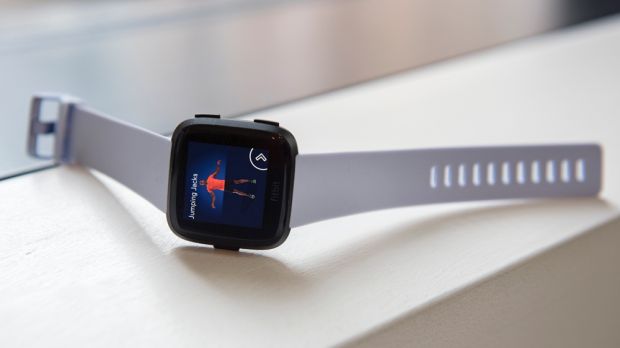
As far as I’m concerned the Versa is as good a wrist tracker for fitness classes and gym work that you’ll find. It doesn’t attempt to count reps, but I haven’t tried a tracker that nails the accuracy and usefulness of this developing feature yet.
Using The Fitbit Versa For Running
If you’re a runner, even a causal one, and you’re buying a fitness tracker it’s worth getting a device with GPS so you can get accurate distance, elevation and pace stats (and get on Strava). The big change between Fitbit’s first smartwatch, the Ionic, and the Versa is the change from a built-in GPS chip to assisted GPS, where the Versa has to connect to your smartphone to acquire a signal (just like with the Charge 2). While I prefer running without a phone you only have to look out for people holding their phone in one hand while running or wearing an armband phone holder to see most are happy to carry one along.
I thought this assisted GPS would have made it quicker for the Versa to lock on to a signal, but I found the Versa takes just as long, if not longer than the Ionic, to find a signal. It seems to help if you have the Fitbit app open on your phone and sync it with the watch, but even then I spent longer than I was happy with standing in place tapping my feet impatiently.
While the Versa is supposed to have the Run Detect feature, which automatically recognizes a run and fires up the GPS, it didn’t work for me on two test runs. It’s a real shame because it’s one of my favourite features on the Ionic.
Beyond those frustrations, though, the Versa has everything I’d want in a run tracker, and I bet it will satisfy the vast majority of runners too. The mid-exercise screen can be customised with a static top and bottom stat of elapsed time, duration, pace, average pace, heart rate (which is colour-coded so you can see which heart rate zone you’re in), calories burned, steps, time of day or lap time, and you can choose which of those metrics will be shown large in the middle of screen. You can also set the screen to be always on (although this will drain the battery faster).
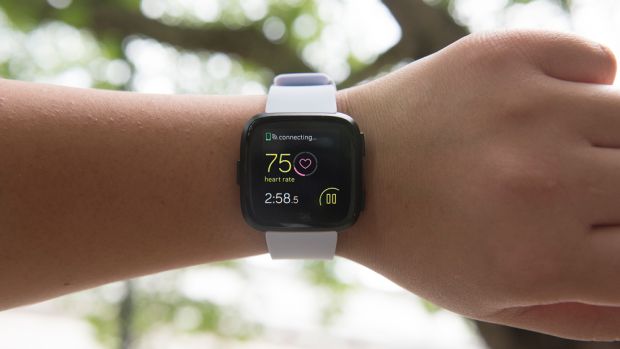
The stats are all nicely displayed afterwards in the app, including a map of your route, splits and time spent in different heart rate zones. It doesn’t include information on cadence – like Samsung, Garmin and others do – but if cadence really matters to you I imagine you’ll be better served by a dedicated running watch. Most importantly, at least for me, it exports smoothly and quickly to Strava.
I also occasionally run intervals so was delighted to see the inclusion of GPS in the interval feature. However, there’s no pace stat available in this mode. Sure, I could go off my heart rate for work periods, but I find pace much easier and there’s no reason I can think of why it wouldn’t be included. Fingers crossed this will be included in Fitbit’s third smartwatch.
RECOMMENDED: The Best Running Watches
Using The Fitbit Versa For Cycling
Like most fitness trackers with GPS, the Versa’s offering for cyclists is very similar to that for runners, minus the steps. It works for casual cyclists, especially commuters, but committed riders will want to look elsewhere, especially because the Versa won’t connect to things like power meters.
The Versa includes Fitbit’s automatic exercise recognition feature. This won’t trigger GPS but it will log the activity, keep tabs on your heart rate and contribute to your active minutes tally. I was surprised that the Versa struggled to maintain Fitbit’s normally accurate standards. On one occasion my 40-minute commute by bike was logged at just over an hour and pushing a pram was also logged as a bike ride (to be fair, though, my wrist was in a similar position to holding handlebars).
Using The Fitbit Versa For Swimming
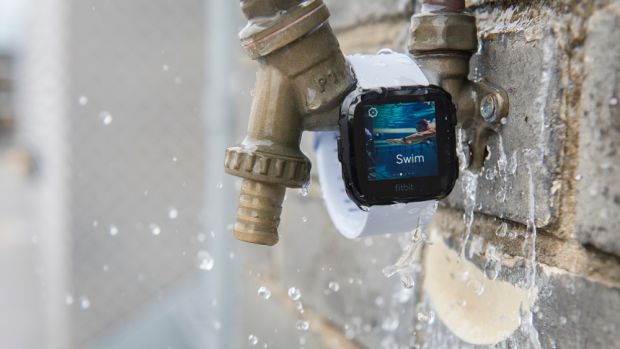
The Ionic was the first Fitbit with a screen that was waterproof, but at launch the offering was a bit bare bones, just tracking time and calories burnt in the pool. Now, the offering’s much improved and the Versa can count lengths, measure your heart rate and recognise different types of strokes – even my far-from-perfect ones.
That’s all good stuff but perhaps the biggest improvement is a tiny one. The length of the pool setting has gone from a few pre-programmed options to being customisable to as little as 10 metres – pretty important if your favoured pool is the tiny one in your gym. My closest one, for instance, is a random 13 metres, which the Versa can now handle.
In my opinion there’s still a little way to go in terms of feature before it’s right up there with the best waterproof trackers. A SWOLF score which gives an indication of your efficiency would be useful, for instance, but the Versa has a much improved feature set and people who like to keep fit in their local pool will welcome this addition.
RECOMMENDED: The Best Waterproof Fitness Trackers
Using The Fitbit Versa As A Heart Rate Monitor
The Versa’s heart rate monitor unlocks a number of Fitbit’s best features, including sleep tracking, a better estimate of calorie burn, resting heart rate and your cardio fitness score (something akin to VO2 max) – the last two are both good measures of your overall fitness.
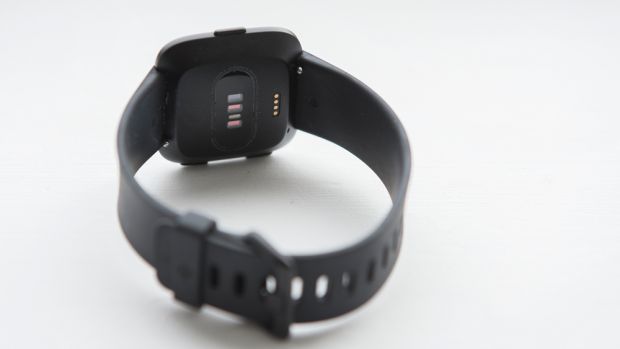
The cardio fitness score in particular is an extremely useful feature. Not only will Fitbit put you on a spectrum so you can see how you compare with other demographically similar athletes, it suggests how much you’d improve if start doing certain things like exercising regularly. To my mind that’s a seriously well designed and highly motivating service that no other fitness tracker brand offers.
In terms of accuracy, I found that the Versa has the same issue all Fitbits, and to a greater or lesser extent, all wrist-worn trackers have – struggling to keep up with rapid changes (for instance, when running intervals) and when you’re working at your peak. As I think this is a tracker that’s suited to a wide range of fitness levels, that’s not much of a problem, but if a more accurate reading is important for you look elsewhere, especially since the Versa won’t pair with a heart rate strap.
RECOMMENDED: The Best Heart Rate Monitors
Using The Fitbit Versa To Listen To Music
One of the big new features launched with the Versa has been integration with Deezer, a music streaming service and Spotify rival. Each Versa comes with a three-month Deezer premium subscription (normally £10 a month) that allows you to save music to your watch and play without an internet connection. And it’s surprisingly easy to do this. On the smartphone or desktop app, you simply star a track and the next time your Versa is plugged in and connected to WiFi it syncs the music over every time without fail. That’s almost Apple-grade ease of use.
As someone whose physical (including in the sense of music files on a local hard drive) music collection has dwindled over the years, this has been something of a revelation. It brings the Versa into line with the music streaming features Samsung and Wear OS devices offer with Spotify and Google Play apps. Is there any difference between Deezer and Spotify? Probably, but not that I noticed.
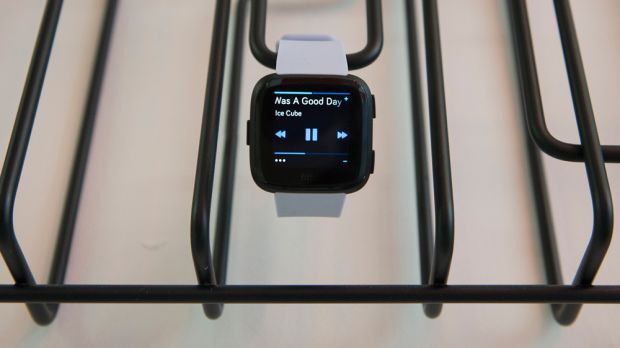
There’s also a Fitbit player which allows you to transfer audio files you own to the watch. You’ll need to download a Fitbit program to a computer, which will then sync to the device over WiFi. I found it easy enough (just not as easy as with Deezer) to set up and transfer files over, and there’s space for around 300 songs.
Bluetooth headphones connect easily to the device, but on occasion I found that the streaming got a little choppy, as if some gremlin was rapidly pressing pause and play. These issues resolved themselves quickly and weren’t too frequent but it could get pretty frustrating when I was trying to match my stride to the beat. Still, if you’re running with assisted GPS you can always play music off your phone and it’s better than having your ears assaulted by your gym’s playlist.
Using The Fitbit Versa For Sleep Tracking
The Fitbit Versa has the same sleep tracking features as any Fitbit with a heart rate monitor, which means the sleep tracking is top-notch. You’ll get a breakdown of time spent in light, deep and REM sleep, although occasionally I woke to find the Versa hadn’t been able to get a good enough reading so I just got a total time reading – the first time this had happened to me wearing a Fitbit.
The killer feature that sets Fitbit apart from the competition is comparing the breakdown of your sleep against other Fitbit users (who are legion) in your demographic. The benefit is that you can see if it’s worth spending some time trying to improve the quality, rather than just duration, of your sleep. The app also offers a few tips, but of course there’s plenty of advice out there on how to do this.
Importantly, the Versa is also light enough and small enough to feel comfortable on the wrist while you sleep, and the battery life means you rarely have to decide between tracking your sleep or charging it.
RECOMMENDED: The Best Sleep Trackers
Using the Fitbit Versa As A Smartwatch
The Versa offers the usual notifications relayed from your smartphone. It’ll buzz when something comes in or you can swipe down from the top of the screen to see the last 15 notifications. You do have to do a bit of manual set-up though, going into the app and turning on notifications from each app. Confusingly at first, each app won’t appear on the list until it’s sent you a notification on your phone after you set up your Versa.
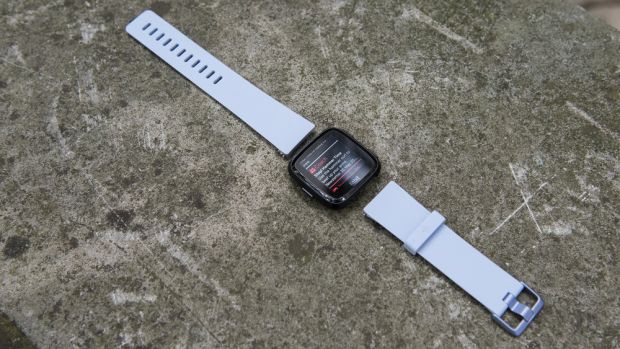
In terms of controlling your smartphone, one of our markers of a true smartwatch (but something that’s rarely achieved unless the manufacturer of phone and wearable are the same), the Versa will allow you to answer calls on your phone and now allows people with Android phones to set up five quick replies of 60 characters or less to ping back to texts or messages from apps like WhatsApp and Facebook Messenger. We haven’t had a chance to try this so we can neither confirm nor deny that you can load up your favourite “welp” GIF.
Traditional fitness tracker manufacturers like Fitbit and Garmin struggle to offer as many, and as many high-quality, apps as Apple or a smartwatch built on Wear OS (Google’s Android for wearables). Fitbit’s app offering has slowly got better but it still lags way behind what I want. The big players who have come on board include Strava (although it only displays stripped down stats from recorded activities), the New York Times (limited to headlines and one sentence on ten stories), Starbucks (which puts a payment loyalty card on your wrist) and a controller for Philips Hue smart light bulbs.
There are other smaller developers making apps of varying quality and usefulness. Some are a crapshoot, but things like a Pomodoro timer (a well known productivity protocol where you work in 25-minute bursts) is useful.
There are also plenty of watch faces to choose from, including the toddler-friendly pet cat (or dog) which you feed with steps. It’s like a Tamagotchi for the wellness age.
Fitbit Pay, launched with the Ionic, has seen an almost complete failure to launch in the UK. While major banks in the US are on board, until recently only challenger banks Starling and Danske offered it. Santander has signed up now, so here’s hoping it takes off so you can make contactless payments from your device.
How Often Am I Going To Have To Charge It?
Not that often – maybe twice a week if you use all the features. Fitbit quotes four days but I found it easily stretched to six days when we weren’t using assisted GPS or music and turned off all notifications.
Once I started properly testing it I used up 90% of the battery over four days and three nights, which included the following: a seven-minute workout using the Fitstar app; a 20-minute workout; a 15-minute swim; a 36-minute bike ride without GPS; one hour 35 minutes of cycling using assisted GPS; close to two hours of streaming Deezer; and regular WhatsApp notifications. If you ask me, that’s a lot. The Samsung Gear Fit2 Pro can barely get through a day without using any features, ditto the Mobvoi Ticwatch S.
Charging from zero to full takes about an hour and a half and, in a change to Fitbit’s usual leads, the Versa uses a cradle with spring-loaded side clips that holds the Versa securely in place.
Where Can I Wear It Without People Laughing At Me?
Everywhere. It’s a lot more stylish than its forerunner the Ionic, thanks to a slimmer, square black body (although the screen is off-centre to accommodate the Fitbit logo). There are also many more interchangeable bands available, from the standard rubber band (black, white, grey, peach and periwinkle, the latter a lavender-esque hue, £25 each), to leather (cognac, lavender, midnight blue and saddle stitch, £50 each), to metal bands (£70-£90, black metal mesh FTW).
The tiny bolts that attach the watch to the straps aren’t as easy to use as the mechanisms on other Fitbits, which may make having different straps for different occasions and activities frustrating.
Should I Consider Buying Something Else?
There are now a number of activity-tracking smartwatches around the £200 mark available but I think the Versa is the pick of the bunch thanks to its superlative tracking chops and battery life, as well as its improving smart features. The Samsung Gear Fit2 Pro has better swim tracking and smart features, but can’t compete in overall tracking and battery life. The Mobvoi Ticwatch S is the smartest smartwatch with plenty of apps and an in-built microphone for “OK Google” commands, but its activity tracking doesn’t match up and the battery won’t last a day. I have yet to try the Suunto 3 Fitness but it’s shaping up to be more of a training-focused offering.
I think the trickiest decision may come when choosing between this and another Fitbit. While the Charge 2 is an older model and doesn’t offer swim tracking or the smartwatch features, you should have no trouble finding it for £100. And if looks aren’t that important to you you’ll probably be able to find the Ionic for £250 for less. And because it shares the same operating system as the Versa, you’ll get all the same features as well as being able to leave your phone behind on a run.

Jonathan Shannon was the editor of the Coach website from 2016 to 2024, developing a wide-ranging experience of health and fitness. Jonathan took up running while editing Coach and used the training plans on the site to run a sub-40min 10K, 1hr 28min half marathon and 3hr 6min marathon. He’s an advocate of cycling to work and is Coach’s e-bike reviewer, and not just because he lives up a bit of a hill. He also reviews fitness trackers and other workout gear.
